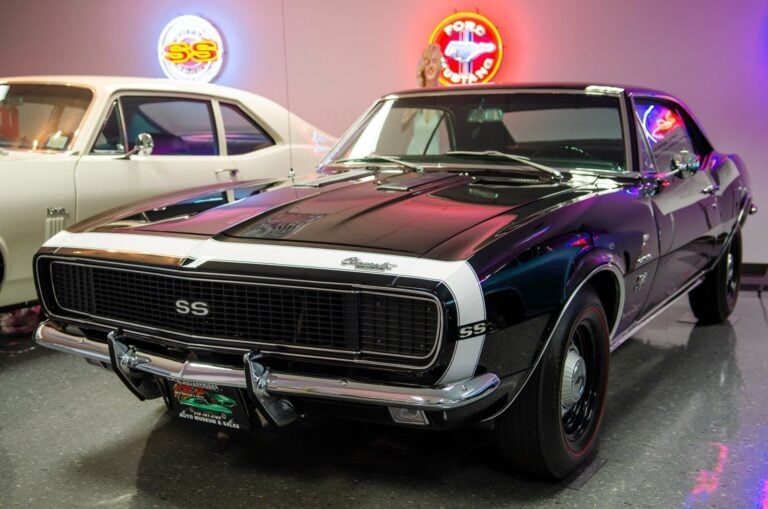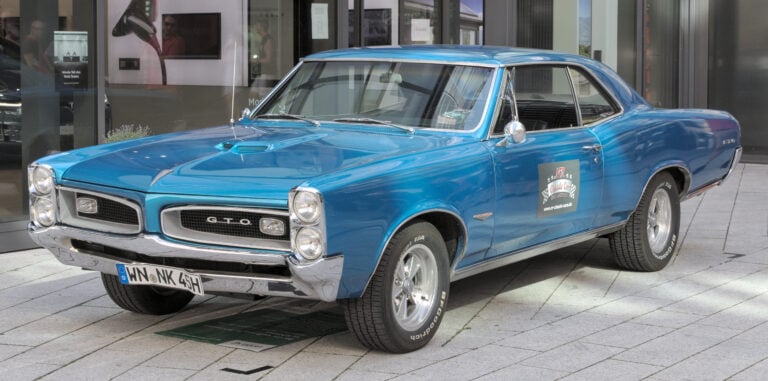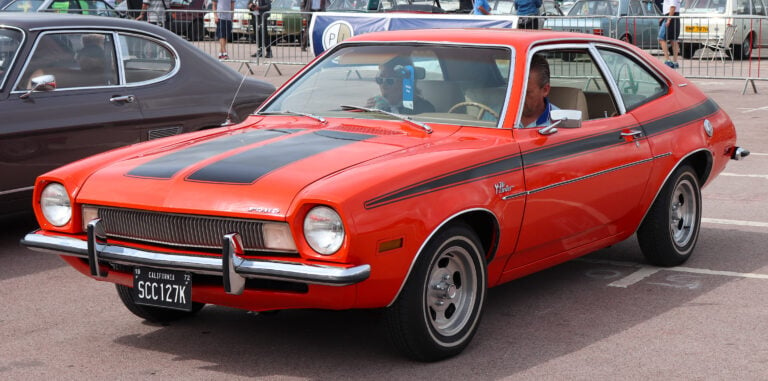The 30 Worst American Cars of All-Time
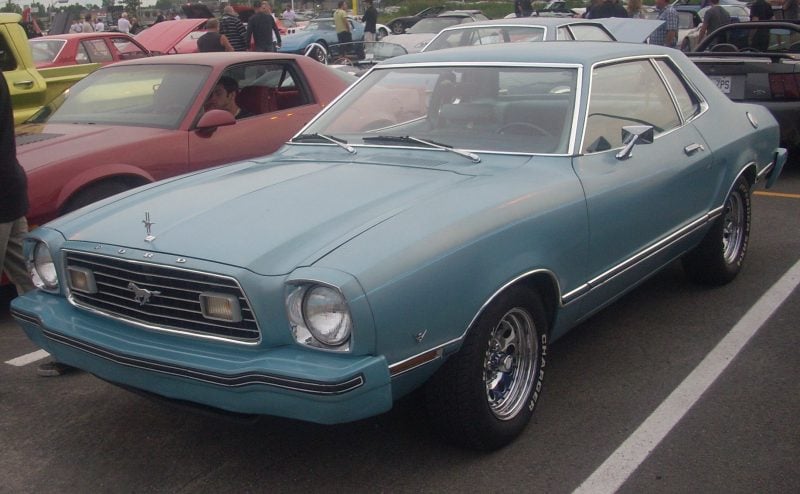
American cars have defined automotive culture for decades, representing power, performance, and freedom on the open road. The golden age of muscle cars, spanning from 1964 to 1971, produced legendary vehicles that continue to capture enthusiasts’ imaginations today.
However, not every attempt at creating an American car resulted in automotive excellence, and many models fell short of expectations through poor design choices, underwhelming performance, or misguided engineering decisions.
This examination covers thirty of the most disappointing cars ever produced by American manufacturers, analyzing what went wrong with each model and why they failed to deliver the excitement drivers expected from true muscle cars.
Here are the 30 worst American cars of all-time:
1. AMC Gremlin
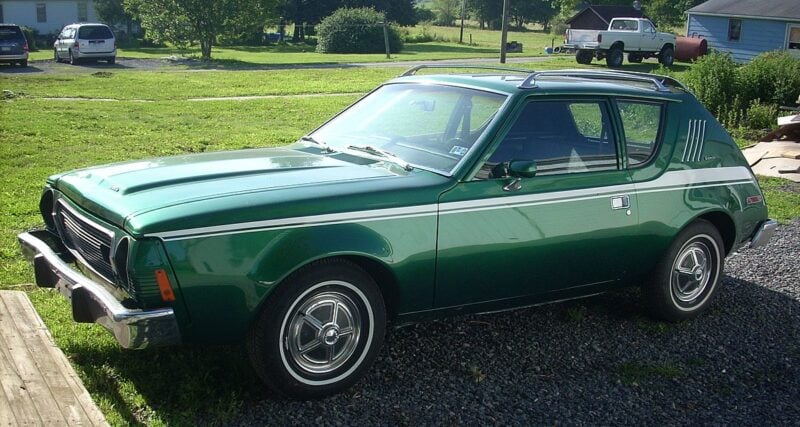
The AMC Gremlin debuted in 1970 as American Motors Corporation’s attempt to enter the subcompact market. Designer Richard Teague created the car by essentially shortening the AMC Hornet, resulting in awkward proportions.
The Gremlin’s unconventional styling featured a truncated rear end that polarized buyers. Its odd appearance earned widespread criticism from automotive journalists and consumers alike.
Performance proved underwhelming for muscle car enthusiasts. The available powertrains failed to deliver the excitement expected during the height of the muscle car era.
TIME Magazine included the Gremlin on its list of the 50 worst cars ever made. Critics cited its outdated technology and peculiar design as major shortcomings.
Despite commercial success as AMC’s second-best-selling model, the Gremlin represented misguided design priorities. The car symbolized the challenges facing smaller manufacturers trying to compete with Detroit’s Big Three.
2. Ford Mustang II
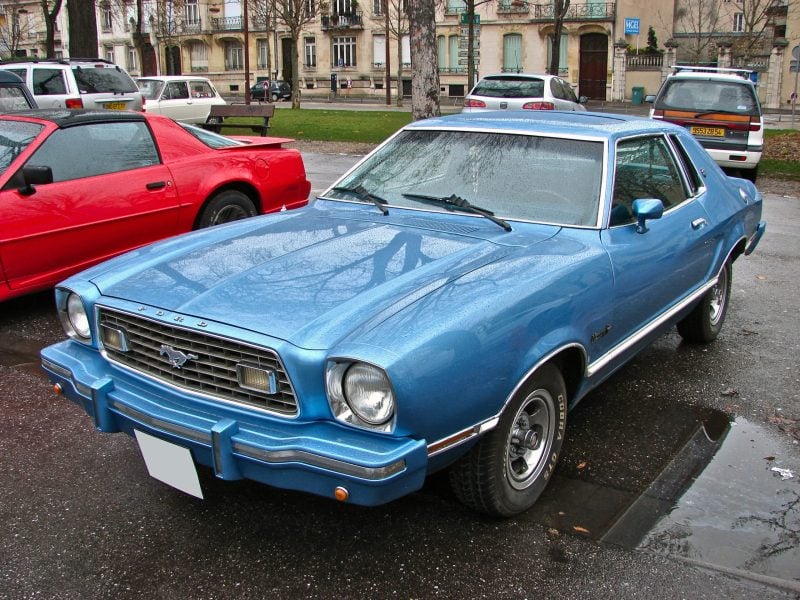
The Ford Mustang II represents one of the most disappointing departures from American muscle car tradition. Introduced in 1974, this compact model abandoned the iconic Mustang’s performance heritage.
The Mustang II was significantly smaller than its predecessors. It featured underwhelming styling that failed to capture the aggressive appearance muscle car enthusiasts expected.
Performance proved equally disappointing. The base 2.3-liter four-cylinder engine produced a mere 88 horsepower. Even the optional V6 and V8 engines delivered lackluster acceleration compared to earlier Mustangs.
The timing couldn’t have been worse. While other pony cars disappeared from the market, Ford’s decision to downsize the Mustang alienated loyal customers who craved power and performance.
The Mustang II’s front-wheel-drive layout and economy car platform further distanced it from muscle car DNA. This model became synonymous with the decline of American performance vehicles during the 1970s emissions era.
3. Pontiac Aztek

The Pontiac Aztek stands as one of automotive history’s most controversial designs. Produced from 2001 to 2005, this crossover SUV failed to capture the muscle car spirit that defined Pontiac’s legacy.
The Aztek’s unconventional styling drew widespread criticism from critics and consumers alike. Time Magazine included it on their “50 Worst Cars of All Time” list, citing its polarizing appearance as a major factor.
Built on the Pontiac Montana minivan platform, the Aztek prioritized utility over performance. Its lackluster power output contradicted traditional muscle car expectations.
Despite featuring innovative amenities like built-in coolers and adventure-focused accessories, the vehicle couldn’t overcome its design shortcomings. The Aztek represented a significant departure from Pontiac’s performance heritage.
The model’s commercial failure contributed to Pontiac’s declining reputation during the early 2000s.
4. AMC Pacer
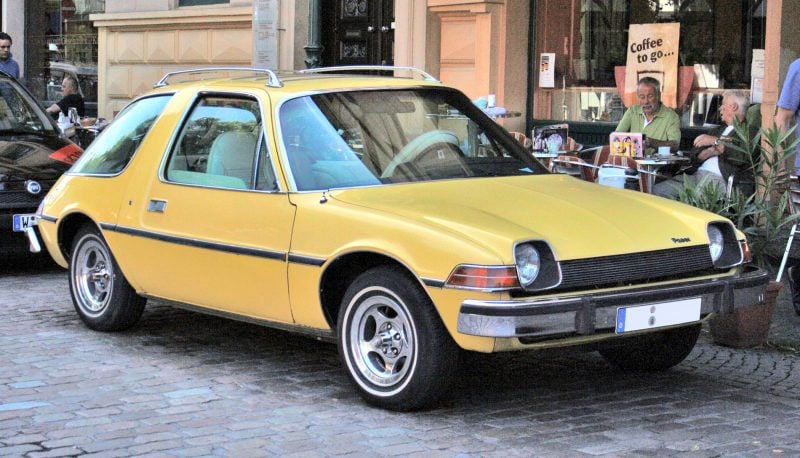
The AMC Pacer launched in 1975 as AMC’s attempt to create a “wide small car” with futuristic styling. The design featured an unusually wide body and extensive glass area that created a fishbowl-like appearance.
The Pacer’s unconventional proportions failed to deliver genuine muscle car performance. It came equipped with underwhelming six-cylinder engines that provided modest power output.
Poor fuel economy plagued the vehicle despite its compact classification. Quality control issues further damaged its reputation among consumers who expected reliability from their performance cars.
The Pacer’s sales initially spiked in 1976 but quickly declined as buyers realized its shortcomings. Its odd styling and lackluster performance made it a symbol of misguided automotive design during the muscle car era.
A Hagerty Insurance poll later named the Pacer the worst car design of all time.
5. Cadillac Cimarron

The Cadillac Cimarron stands as one of General Motors’ most criticized decisions. Introduced in 1982, this compact sedan was essentially a rebadged Chevrolet Cavalier with luxury trim and a premium price tag.
GM rushed the Cimarron to market to compete with smaller European luxury cars like Mercedes-Benz models. The company added leather seats, wood trim, and Cadillac badges to the J-platform sedan.
The strategy backfired spectacularly. Buyers recognized the Cimarron as an overpriced economy car lacking the performance and prestige expected from Cadillac.
The vehicle damaged Cadillac’s reputation for luxury and exclusivity. Its weak 1.8-liter four-cylinder engine and economy car handling contradicted everything the brand represented.
Production ended in 1988 after poor sales throughout its run. The Cimarron remains a cautionary tale about badge engineering gone wrong.
6. Chevrolet Vega GT
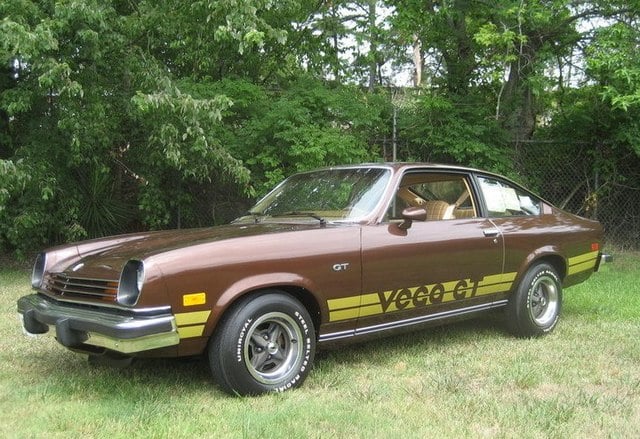
The Chevrolet Vega GT represented GM’s attempt to create a sporty compact car for the American market. Introduced in 1971, it was designed to compete with popular imports like the Volkswagen Beetle.
The Vega GT suffered from severe quality control issues that plagued the entire Vega line. The aluminum engine block frequently developed cooling problems and couldn’t retain oil properly.
Rust became a major concern for Vega owners. The car’s body panels corroded rapidly, often within just a few years of ownership.
Despite its sporty GT designation, the car failed to deliver reliable performance. Engine failures were common, leading to frequent breakdowns and costly repairs.
The Vega’s reputation became so damaged that it earned recognition as one of the worst American cars ever produced. Edmunds ranked it among the top five worst cars of all time.
7. Dodge Colt

The Dodge Colt represented everything wrong with badge engineering during the muscle car era. This compact car was actually a rebadged Mitsubishi Galant imported from Japan.
Dodge marketed the Colt as an American muscle car despite its modest four-cylinder engine. The base model produced just 83 horsepower, falling drastically short of true muscle car standards.
Even the sportier variants with larger engines couldn’t deliver authentic muscle car performance. The Colt’s lightweight construction and economy-focused design prioritized fuel efficiency over power.
The car’s Japanese origins clashed with traditional American muscle car values. Enthusiasts expected domestic V8 engines and aggressive styling, not imported economy car mechanics.
The Dodge Colt failed to capture the essence of American muscle cars. It remains a prime example of manufacturers attempting to expand their lineups without understanding core brand identity.
8. Ford Pinto GT

The Ford Pinto GT represented Ford’s attempt to inject performance credibility into their controversial subcompact platform. Produced from 1974 to 1980, it featured a 2.3-liter four-cylinder engine and sport-tuned suspension.
Despite the GT badge, the Pinto GT suffered from the same fundamental safety issues that plagued the entire Pinto line. The rear-mounted fuel tank remained vulnerable to rupture during rear-end collisions.
The GT’s performance improvements were modest at best. The engine produced only 83 horsepower, hardly qualifying as muscle car territory by any standard.
Ford’s internal memo calculating repair costs versus potential victim payouts became notorious. The company determined that paying settlements would cost less than fixing the design flaw.
The Pinto GT’s association with the broader Pinto scandal overshadowed any performance intentions. It remains a cautionary example of prioritizing cost-cutting over consumer safety.
9. Oldsmobile Omega

The Oldsmobile Omega represented everything wrong with 1970s muscle car marketing. Produced from 1973 to 1984, this compact car masqueraded as a performance vehicle while delivering disappointing results.
Built on GM’s X-platform, the Omega was essentially a badge-engineered Chevrolet Nova. It suffered from poor reliability issues that plagued owners throughout its production run.
The car’s uninspired design failed to capture any authentic muscle car spirit. Its lackluster handling and performance made it forgettable among Oldsmobile’s lineup.
Marketing positioned the Omega as a muscle car, but it was simply an economy compact with flashy styling cues. The vehicle lacked the power and performance characteristics that defined true muscle cars.
Mechanical problems became notorious with the Omega, earning it a reputation as one of the worst cars of the 1970s and 1980s.
10. Mercury Cougar XR-7 (1977-1978)
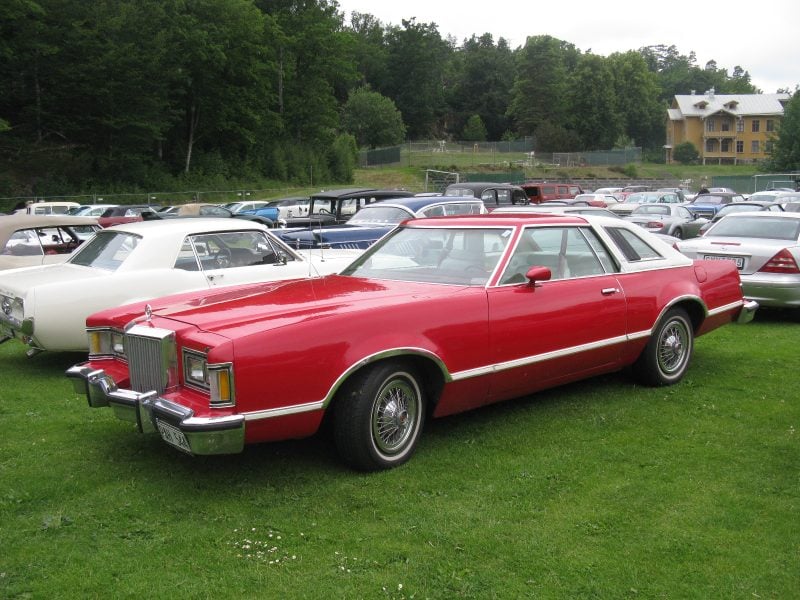
The 1977-1978 Mercury Cougar XR-7 represented a dramatic departure from the muscle car era. Ford reskinned their intermediate line for 1977, creating confusion as GM’s new full-size models were essentially the same size as these “mid-size” cars.
The XR-7 suffered from typical late-1970s performance limitations. Most examples came equipped with the 351W engine paired with automatic transmissions and open differentials with high gear ratios like 2.47:1.
By 1978, the automotive landscape had shifted completely. Even the Corvette produced minimal power, and the national 55 mph speed limit discouraged performance driving.
The Cougar had evolved from its original Mustang-based pony car roots into a personal luxury vehicle. While it found commercial success, outselling the Mustang in 1978, it abandoned any pretense of muscle car performance in favor of comfort and luxury appointments.
11. Buick Skylark GS
The Buick Skylark GS positioned itself as a gentleman’s muscle car during the late 1960s. While this approach had merit, it ultimately undermined the car’s performance credibility.
Buick marketed the GS as a more mature and luxurious alternative to other muscle cars. This strategy limited its appeal in a market that prioritized raw performance and aggressive styling.
The GS couldn’t match the performance levels offered by Chevrolet, Pontiac, or Chrysler competitors. Its horsepower figures consistently lagged behind rivals in the same price range.
The 1968-1969 models received criticism for their styling. Automotive critics described these years as “not entirely cohesive” and “not Buick’s best work.”
The luxury-focused approach created a narrow market niche. Most muscle car buyers prioritized performance and looks over refined appointments, leaving the GS with limited appeal.
12. Plymouth Volaré
The Plymouth Volaré debuted in 1976 as Chrysler’s mid-sized offering during a particularly challenging period for the company. The car quickly became notorious for significant quality control issues that plagued owners from the start.
Rust problems emerged as one of the Volaré’s most persistent flaws. The vehicle attracted corrosion like a magnet, particularly in areas prone to moisture and road salt exposure.
Mechanical failures compounded the rust issues. Owners frequently reported breakdowns and reliability problems that made the Volaré an frustrating ownership experience for families seeking dependable transportation.
The Road Runner variant attempted to capitalize on Plymouth’s muscle car heritage. However, this version failed to deliver the performance expected from the iconic nameplate, featuring underwhelming power output that disappointed enthusiasts.
Multiple recalls further damaged the Volaré’s reputation. These safety and quality issues cemented its place among the era’s most problematic vehicles.
13. Chevrolet Monza
The Chevrolet Monza debuted in 1975 during the height of the fuel crisis. Chevrolet marketed it as a sporty yet efficient alternative to traditional muscle cars.
The Monza suffered from fundamental design flaws that doomed it from the start. Its oddly proportioned body attempted to mimic a smaller Corvette but achieved an awkward, disproportionate appearance instead.
Performance proved equally disappointing. The car came equipped with weak engines that failed to deliver genuine muscle car power. Its cramped interior made driving uncomfortable for most adults.
Build quality issues plagued the model throughout its production run. The frame rusted easily, and many components were difficult to access for routine maintenance. These problems made ownership frustrating for buyers.
The Monza’s identity crisis became its biggest weakness. It was too small for American muscle car standards yet too American in design philosophy to compete with efficient imports.
14. Dodge Dart Sport
The Dodge Dart Sport represented a diluted attempt at muscle car performance during the early 1970s. While earlier Dart variants like the Swinger and Demon packed serious punch, the Sport version fell short of expectations.
Dodge positioned the Dart Sport as an affordable entry-level muscle car. However, the base model came equipped with underwhelming six-cylinder engines that lacked the power muscle car enthusiasts demanded.
Even with optional V8 engines available, the Dart Sport suffered from inconsistent build quality and uninspiring performance numbers. The car’s compact platform struggled to handle the torque effectively.
The styling attempted to capture muscle car aesthetics but appeared conservative compared to competitors. Interior appointments felt cheap and seats provided minimal comfort during spirited driving.
Production quality issues plagued many units, contributing to reliability concerns that damaged the model’s reputation among performance car buyers.
15. Ford Torino
The Ford Torino produced between 1968 and 1976 competed in the intermediate market segment. Ford positioned it as a direct rival to other mid-size muscle cars of the era.
The Torino suffered from inconsistent performance across its production run. Many variants lacked the aggressive styling and power that defined true muscle cars.
Ford’s decision to dilute the Torino brand with luxury-focused models hurt its credibility. The Gran Torino Elite particularly damaged the line’s reputation among performance enthusiasts.
The base Torino models came with underwhelming engines that failed to deliver expected muscle car performance. Even higher-trim versions often disappointed buyers seeking genuine power.
Build quality issues plagued many Torino models throughout production. Poor reliability became a common complaint among owners who expected better from Ford’s intermediate offering.
The Torino’s styling remained conservative compared to more aggressive competitors. This approach failed to capture the bold spirit that muscle car buyers demanded during the segment’s peak years.
16. Pontiac Ventura
The Pontiac Ventura represented a significant misstep in muscle car history when it became the platform for the 1974 GTO. Pontiac downsized the once-mighty GTO from a standalone model to merely a trim option on their entry-level Ventura.
The Ventura was essentially a rebadged Chevrolet Nova. This compact platform was Pontiac’s smallest and cheapest offering at the time.
The GTO package on the Ventura came with a 5.7-liter V8 engine that produced only 200 horsepower and 295 pound-feet of torque. These numbers fell far short of what muscle car enthusiasts expected from the legendary GTO nameplate.
The transformation from the beloved 1964 GTO to this economical compact car fooled nobody. Enthusiasts recognized it as a desperate attempt to capitalize on a famous badge without delivering authentic muscle car performance.
17. Chevrolet Chevette
The Chevrolet Chevette attempted to capitalize on the muscle car era but fell short of expectations. Introduced in 1976, this subcompact car lacked the powerful engines and aggressive styling that defined authentic muscle cars.
Chevrolet based the Chevette on an outdated Opel design rather than developing an original platform. The car featured weak performance capabilities that disappointed enthusiasts seeking genuine muscle car thrills.
Despite becoming America’s best-selling small car in 1979-1980, the Chevette earned recognition for all the wrong reasons. TIME Magazine included it on their list of the 50 worst cars ever made.
Car Talk listeners ranked the Chevette fifth in their “Worst Car of the Millennium” poll. The vehicle’s anemic performance, uninspiring design, and poor build quality made it a forgettable entry in automotive history.
18. Mercury Zephyr
The 1978 Mercury Zephyr represents everything wrong with American automotive design during the late 1970s. This compact car attempted to compete in a crowded market but failed spectacularly.
The Zephyr’s styling was particularly problematic. Its awkward proportions and uninspiring design made it stand out for all the wrong reasons on American roads.
Performance was equally disappointing. The car’s underwhelming engine options and lackluster acceleration placed it far from true muscle car territory.
Mercury marketed the Zephyr as a refined alternative to other compact cars. However, the execution fell short of these ambitious promises.
The name itself derives from Greek mythology, referring to gentle summer breezes. Unfortunately, the actual vehicle provided no such pleasant experience for drivers or passengers.
The Zephyr disappeared from Mercury’s lineup after just a few years. Its brief production run reflects the automotive industry’s struggles during this difficult period.
19. Dodge Omni GLH
The Dodge Omni GLH represents one of the most misguided attempts at creating an American muscle car. GLH stood for “Goes Like Hell,” a name coined by Carroll Shelby that promised more than the car could deliver.
Based on the mundane Dodge Omni economy car, the GLH added a performance package to an inherently flawed platform. The subcompact front-wheel-drive layout contradicted everything traditional muscle cars represented.
Dodge sold only 3,285 GLH models in 1984, reflecting poor market reception. The GLH package added over $1,500 to the base Omni’s $5,830 price, making it expensive for what buyers received.
The car’s diminutive size and economy car origins made it an awkward fit in Dodge’s performance lineup. Despite Shelby’s involvement, the GLH failed to capture the essence of American muscle car heritage.
20. AMC Hornet
The AMC Hornet debuted in 1970 as American Motors Corporation’s attempt to capture the compact car market. The company positioned it as an alternative when larger vehicles were losing popularity.
Despite its compact size and funky design, the Hornet struggled to deliver authentic muscle car performance. The AMC Hornet AMX variant particularly failed to embody the true spirit expected from American muscle cars.
The Hornet’s performance capabilities fell short of competing muscle cars from the Big Three automakers. Its engines lacked the power and excitement that defined the muscle car era.
American Motors often found itself overshadowed by Ford, General Motors, and Chrysler during this period. The Hornet’s middling performance and unremarkable presence contributed to AMC’s continued struggle for market relevance in the competitive muscle car segment.
21. Ford EXP
The Ford EXP represents one of Ford’s most misguided attempts at creating a sporty vehicle. Introduced in 1982, this compact two-seater was marketed as an affordable sports car but failed to deliver on performance expectations.
Ford built the EXP on the Escort platform, which immediately limited its potential. The front-wheel-drive layout and economy car underpinnings contradicted the sporty image Ford tried to project.
The base engine was a weak 1.6-liter four-cylinder producing just 70 horsepower. Even the optional turbocharged version managed only 120 horsepower, insufficient for genuine sports car performance.
The EXP’s styling attempted to evoke European sports cars but resulted in an awkward design. The bubble-back rear window and plastic body cladding looked cheap rather than sophisticated.
Production ended in 1988 after disappointing sales. The EXP demonstrated that sporty styling alone cannot compensate for fundamental performance deficiencies.
22. Pontiac LeMans
The Pontiac LeMans started strong in 1961 as a compact car that eventually spawned the legendary GTO. However, the nameplate took a devastating turn in 1988.
General Motors replaced the respected American-built LeMans with a rebadged Daewoo from South Korea. This version abandoned everything that made Pontiac special.
The 1988-1993 LeMans featured cheap interior materials and questionable build quality. Its underpowered engines delivered lackluster performance that contradicted Pontiac’s performance image.
The car’s bland styling removed any trace of muscle car DNA. It represented corporate cost-cutting at its worst, diluting a once-proud nameplate.
This LeMans became synonymous with GM’s worst decisions during the late 1980s. It damaged Pontiac’s reputation and showed how far the brand had fallen from its muscle car roots.
23. Chevrolet Chevelle Laguna
The Chevrolet Chevelle Laguna marked a troubling departure from the muscle car formula that made its predecessors legendary. Introduced in the early 1970s, this model coincided with the beginning of the end for high-performance American cars.
The Laguna suffered from severely restricted engine options due to emissions regulations. The once-mighty big-block V8s were either neutered or eliminated entirely. Power outputs dropped significantly from earlier Chevelle generations.
The car’s distinctive urethane front fascia and styling changes polarized enthusiasts. Many considered the design awkward compared to the clean lines of earlier Chevelles.
By 1974, the Super Sport designation was dropped entirely. The Laguna Type S-3 became the performance flagship, but performance was minimal by muscle car standards.
Despite NASCAR success, the street versions disappointed buyers expecting true muscle car performance.
24. Buick Apollo
The Buick Apollo arrived in 1973 as a compact offering that disappointed muscle car enthusiasts. Built on GM’s X-body platform, it shared components with the Chevrolet Nova and Pontiac Ventura.
The Apollo’s styling lacked the aggressive presence expected from a performance-oriented Buick. Its conservative design failed to capture the bold aesthetic that defined true muscle cars of the era.
Performance options were limited and uninspiring. The available V8 engines produced modest power figures that couldn’t compete with established muscle car benchmarks.
Build quality issues plagued early Apollo models. Poor fit and finish undermined buyer confidence in what should have been a reliable compact performance car.
The Apollo represented Buick’s struggle to adapt to changing market conditions in the 1970s. It neither delivered genuine muscle car performance nor offered compelling value as an economy car, leaving it without a clear identity in the marketplace.
25. Oldsmobile Vista Cruiser
The Oldsmobile Vista Cruiser earned its place among muscle car disappointments despite its innovative design features. Produced from 1964 to 1977, this station wagon attempted to bridge the gap between family practicality and performance aspirations.
The Vista Cruiser’s defining characteristic was its raised rear roofline with skylights and side windows. This feature provided additional headroom and visibility but added unwanted weight that hindered performance.
While marketed toward younger buyers with families, the Vista Cruiser struggled with its identity crisis. The wagon’s heavy construction and family-oriented design compromised the raw power expected from true muscle cars of the era.
Even with available V8 engines, including the 455 cubic inch option, the Vista Cruiser could not deliver the acceleration and handling that defined successful muscle cars. Its weight penalty and wagon configuration made it more suited for grocery runs than drag strips.
26. Ford Maverick Grabber
The Ford Maverick Grabber promised muscle car excitement but delivered disappointment. Introduced in 1970, this compact coupe suffered from a fundamental mismatch between its aggressive styling and lackluster performance.
Ford marketed the Grabber as a sporty alternative during the early 1970s. The standard engine was a 200 cubic-inch inline six producing just 120 horsepower. This anemic output made acceleration sluggish and highway passing dangerous.
The Grabber started as a trim package in 1970 before becoming its own model in 1971. It featured racing stripes, a blackout grille, and bold graphics that suggested performance the car couldn’t deliver.
While V8 options were available, most buyers opted for the base six-cylinder engine. The result was a car that looked fast but drove like an economy vehicle, earning it a reputation as one of the era’s most misleading muscle cars.
27. Chrysler Cordoba
The Chrysler Cordoba represented everything wrong with 1970s muscle cars. Despite Ricardo Montalban’s famous advertising campaign, the car suffered from severe performance limitations.
Chrysler equipped the Cordoba with a massive 400 cubic inch V8 that produced only 145 horsepower. This pathetic power output made it one of the most underpowered engines relative to its displacement during the malaise era.
Build quality plagued the model throughout its production run. Owners frequently reported paint flaking, transmission failures, and vinyl top replacements within the first few years of ownership.
The car lasted only from 1975 to 1979 in its original form. While it sold well initially due to marketing success, the Cordoba’s poor engineering and reliability issues quickly tarnished its reputation among muscle car enthusiasts.
28. Jeep CJ-5 Muscle Edition
The Jeep CJ-5 Muscle Edition represented an awkward attempt to merge off-road capability with muscle car performance. This variant emerged during the mid-1970s when Jeep tried to capitalize on the muscle car trend.
The vehicle suffered from fundamental design conflicts. Its high center of gravity and short wheelbase made it unstable at highway speeds. The addition of larger engines only worsened these handling characteristics.
Power delivery felt inconsistent due to the CJ-5’s lightweight construction and primitive suspension setup. The chassis couldn’t effectively manage the increased torque without compromising ride quality.
Build quality issues plagued many examples. Electrical problems and premature engine wear were common complaints among owners.
The CJ-5 Muscle Edition failed to satisfy either muscle car enthusiasts or traditional Jeep buyers. It lacked the refined performance of dedicated muscle cars while sacrificing the utilitarian nature that made standard CJ-5s appealing.
29. Dodge Aspen
The Dodge Aspen launched in 1976 as a replacement for the Dart but quickly became notorious for widespread quality control issues. The vehicle suffered from rusting bodies, electrical problems, and underperforming engines that made it unreliable for owners.
When Dodge introduced the Aspen R/T variant, it promised a return to muscle car performance. The R/T badge carried significant heritage from Dodge’s Road/Track legacy.
However, the Aspen R/T failed to deliver on its muscular promises. The 360 CID V8 engine produced only 185 horsepower, which was insufficient for genuine muscle car performance.
The combination of poor build quality and lackluster performance damaged the Aspen’s reputation. Multiple recalls plagued the model throughout its production run, further cementing its status as one of Dodge’s most disappointing efforts during a particularly difficult period for the company.
30. Pontiac J2000
The Pontiac J2000 struggled to deliver the performance expected from the Pontiac brand. Introduced in 1982, this compact car was part of GM’s J-body platform aimed at competing with import vehicles.
The J2000 featured uninspiring engine options that failed to produce muscle car power. Its base 1.8-liter four-cylinder engine generated only 88 horsepower, far below muscle car standards.
The design lacked the aggressive styling associated with true muscle cars. Instead of bold lines and performance cues, the J2000 offered mundane compact car proportions.
GM positioned the J-cars as their answer to foreign competition rather than performance vehicles. This approach left the J2000 without the raw power or distinctive character that defined successful muscle cars of previous decades.
The J2000 represented Pontiac’s departure from its performance heritage during the early 1980s.
What Defines a Car Failure?
Car failures stem from three critical areas: fundamental design problems that compromise the vehicle’s integrity, performance numbers that fall short of expectations, and poor market reception that damages the brand’s reputation.
Common Design Flaws
Structural weaknesses plagued many failed cars. Poor chassis design led to excessive body flex during acceleration and cornering. The 1971 Mercury Cougar suffered from frame rigidity issues that affected handling.
Build quality problems created long-term reliability concerns. Inconsistent panel gaps, inadequate rust protection, and subpar interior materials diminished the ownership experience. Many 1970s models used cheap plastics that cracked within years.
Aerodynamic disasters hurt both performance and fuel economy. The Pontiac Aztek’s unconventional design created significant drag despite its modern era. Poor airflow management reduced top speeds and increased wind noise.
Weight distribution errors compromised handling characteristics. Front-heavy designs caused understeer and reduced traction during launches. The 1974 AMC Javelin struggled with nose-heavy balance that affected cornering ability.
Performance Shortcomings
Horsepower ratings that failed to meet advertised claims destroyed credibility. The 1975 Chevrolet Chevelle Laguna S-3 produced significantly less power than previous generations due to emissions regulations.
Acceleration times below muscle car standards disappointed buyers. Quarter-mile times exceeding 16 seconds became common in mid-1970s models. The 1974 Pontiac GTO managed only modest acceleration figures.
Engine reliability issues created expensive ownership experiences. Premature cam failures, head gasket problems, and carburetor troubles plagued numerous models. The 1982 Chevrolet Camaro faced fuel injection problems in early production.
Transmission problems limited power delivery effectiveness. Weak automatic transmissions couldn’t handle engine torque. Manual gearboxes suffered from poor synchronization and clutch durability issues.
Market Reception and Impact
Sales figures revealed consumer rejection of failed models. Low production numbers indicated poor market acceptance. The Pontiac Aztek’s disappointing sales led to its quick discontinuation despite initial marketing efforts.
Resale values dropped rapidly for problematic muscle cars. Poor reliability records and lackluster performance hurt long-term value retention. Many 1970s emissions-era models lost significant value compared to earlier variants.
Brand reputation damage affected entire manufacturer lineups. Failed muscle cars tarnished company images and reduced consumer confidence. Poor models influenced buyer perceptions for years afterward.
Enthusiast community rejection sealed the fate of many models. Classic car collectors avoided problematic vehicles, limiting restoration interest and parts availability.
Legacy of Poorly Received Cars
Failed cars fundamentally altered how automakers approached performance vehicle development and taught manufacturers critical lessons about market positioning, quality control, and consumer expectations.
Influence on the Car Industry
The AMC Hornet AMX’s inability to deliver authentic car performance highlighted the importance of maintaining brand credibility. Its failure demonstrated that simply adding performance badges without substance alienated enthusiasts.
The Ford Mustang II’s poor reception between 1974-1978 showed how downsizing iconic nameplates could damage decades of brand equity. Sales figures plummeted as buyers rejected the heavier, slower successor to the legendary original Mustang.
Market Impact:
- Performance car sales declined industry-wide after high-profile failures
- Enthusiast publications became more critical of manufacturer claims
- Secondary market values suffered for entire model lines
Failed launches like the Pontiac GTO’s later iterations created identity crises that confused both loyal customers and potential new buyers. These models struggled to satisfy existing enthusiasts while failing to attract fresh audiences.
The collective failures of poorly executed muscle cars contributed to the industry’s shift away from pure performance vehicles during the late 1970s and early 1980s.
Lessons Learned by Automakers
Manufacturers discovered that quality control was non-negotiable in the performance segment. Poor build quality and reliability issues quickly destroyed reputations that took years to establish.
The importance of authentic performance became clear. Cars that looked aggressive but delivered lackluster acceleration or handling were quickly rejected by informed buyers.
Key Takeaways:
- Performance claims must match real-world capabilities
- Brand heritage requires careful stewardship
- Cost-cutting on critical components backfires
Automakers learned that car buyers possessed deep technical knowledge and couldn’t be fooled by superficial modifications. This educated customer base demanded genuine engineering improvements rather than cosmetic upgrades.
The failures taught manufacturers to maintain consistent performance standards across model generations. Dramatic departures from established formulas risked alienating core customer bases without guaranteeing new market penetration.
Modern car development reflects these hard-learned lessons through rigorous testing protocols and authentic performance delivery.

